Young, a senior engineer on the L10n team, attended a 6-week flight training program with a full scholarship at the Purdue University Aviation Department. He had his first solo flight, passed the practical and written exams and received a sport pilot certificate. The program offered by AbleFlight.org is designed for people with disabilities, and Young was one of the 5 scholarship winners. He is truly inspiring for all of us and shows us that we can achieve our goals despite the obstacles we are facing. I had the pleasure to interview Young about his flight experience and would like to share with you all.
Congratulations on such an amazing achievement. What motivated you to apply for the scholarship and to attend the flight training?
I like flying. I had been wondering if flying was possible for me. I’m in a wheelchair and I reached out to different flight schools. They told me there is no way for me to learn it because there is no instructor for that. Another thing is there is no plane for that because I cannot control the regular airplanes. Basically the regular airplanes, or any airplanes, require both legs for full control. In my case, I would need to do a lot of hand control and it’s not easy and simple so they said it’s not possible. I kept trying to find a way to do it. Luckily, I found AbleFlight. That is the only place so far that I know of that provides flight training to people with disabilities.
Has flying always been your dream?
Yeah, I like flying. I like flight simulators. I feel different than other people even in flight simulator programs. One time I thought: Is it possible for me to do this? If I can challenge myself, why not? I started digging and searching around. I didn’t stop; I didn’t say to myself: Aw, it’s not possible at all.
On average how many hours a day did you have to spend on practicing, learning and studying?
I needed to do everything in parallel. I started doing flight training and then there were 12 classes. Whenever I had time, I needed to go back to study the materials for the knowledge. Actually, knowledge is the foundation of flying. If you don’t have the knowledge, you go up there and you cannot operate correctly. And then I needed to prepare for the written exam, which was a separate test. To pass that, I needed to study a lot. So I needed to do the written exam, practiced and studied. Everything was going in parallel so sometimes I didn’t have enough time. That was the most difficult part.
Whenever I had time, in my personal time, I studied. Whenever. My flight time was 7 am so I needed to wake up at 5:30 in the morning, got ready, ate something as I couldn’t fly with an empty stomach and be there at 7. Also there were the 3-hour time difference. It was very difficult in the first 2 weeks because of the time difference and because I was away from home. No one was helping me. I needed to go somewhere to eat. Everything was happening all at once. I needed to adjust myself, adjust to the place and the weather, along with all the study. It wasn’t an easy thing. I thought I was able to handle it but it was much harder than I expected.
You never thought about giving up?
In the first or second week, I didn’t think about that. During the 6 weeks, there were certain periods that my progress was kind of slow and then my father was sick again. I heard he was in the hospital. I was thinking: “What should I do? Should I continue or go back home?” Then my sister called me and said: “Don’t worry about it.” Gradually, he was recovering again. Then I decided to keep doing it. There were times I was thinking: “Aw, I don’t need to finish.” They know I tried hard. That was by the time I went solo. It was a very critical time. My wife and my sister said: “Don’t worry. Keep doing it.” Also the weather didn’t help me because I didn’t have enough time to finish up. To pass the test, I needed to prepare and get ready. The weather was not helping me 4 days in a row. I was so depressed.
When the weather wasn’t good, what did you do?
If the weather was not good and some conditions were not met, I couldn’t fly solo. Because solo has more restrictions for the wind, the visibility, etc. so it’s harder to go solo. So I needed to finish something I couldn’t have finished. For 4 days I was really disappointed and exhausted. Later the weather was nice again for 2 days. I finished up everything and then passed the practical exam. I felt relieved after that. So it’s like watching a drama, exactly the same. I had the hardships, the struggle, something not working well… and at the end, everything worked.
Can you describe what it felt like to be on your first solo flight?
The solo is I’m doing everything by myself, from the beginning to coming back to the airport. Yeah, I knew it would be nerve-wracking but I was practicing a lot so it was more natural and I felt calm and confident. Yeah, it was a very different experience because no one was behind me. The instructor had been behind me for 4 weeks and all of a sudden, he was not there. At some point, I felt good because no one would keep talking. That was one thing. It was very strange without anyone behind me. When I was flying solo, I could go to a certain altitude and I felt very good. I felt I could fly for myself. A lot of people actually seem nervous or frustrated for their
first solo flight. I was a little nervous but everything was under my control so it was OK. When I was in the air, I felt like “wow, I can fly” and it was an awesome experience.
What’s the best part about flying?
For me, I felt very satisfied that I had enough knowledge to control everything because from takeoff to landing, I needed to communicate with the tower by radio. That was very critical, not just controlling the plane. Knowing all the steps and having all the knowledge about flying made me very satisfied and confident. So I felt like I jumped up to the next level of my knowledge. It wasn’t like before when I would wonder: “How did they do this? How did they control? How did they fly like this?” Through the training and the study, I was able to comprehend flying. Sometimes it was complicated; sometimes I was like: “Oh, this is how it works.” So I felt very satisfied with having the knowledge.
Can you explain what a sport pilot is?
Having a sport pilot certificate means you can fly light-sport aircraft. The plane I flew had a spec of 1320 lbs.. 1320 lbs. is the maximum gross weight. So I can fly any type of sport-light aircraft with one passenger behind me or by me depending on the aircraft. It allows me to fly anywhere in the US, but I cannot go cross border. That’s the rule. They call it cross-country, which means I can fly to any airport my airplane can go. Once you are a sport pilot, that’s the main benefit or advantage. You have the freedom of flying as long as you follow the rules and keep proper air space.
Any plans to fly anytime soon?
I’ll contact the owner of the airplane I flew. I can fly that airplane for now because it has a hand control. Luckily in this area there are two of them, I think, one in Salinas, one in somewhere here. I had two experiences with the airplane in Salinas. I was just sitting in the front seat. I didn’t control the plane. The pilot just showed me what I could do. But the thing was it was very expensive. It’s a lot of money. And the other thing was the time. You need to fly very often within a very short period of time to get a certificate. For me, how could I go twice a week? It wasn’t possible or doable. And the environment wasn’t really ideal or practical. So I was thinking: This is going to be taking forever.
So basically it was an introduction to flight?
Yeah, it was an introduction. Because I wanted to know how flying an airplane worked and then decide if I would want to do it. I knew that for flight training, they would use the same airplane as the one I was in. In the US, there are only 5 such airplanes. Two are here; two are on the East Coast. So far, I was lucky to fly 3 of them. These planes are owned by separate owners. Unless I go to that particular owner, I don’t think I can fly again. They lease the airplanes for the training periods, so they pay to the owners.
What do you have to do to fly? What do you have to control?
It’s the exact same procedure as flying other aircraft. First, there is a preflight procedure. Then there is a checklist. You need to check the outside of the aircraft to see if there are any cracks. You also need to check the wheels, wings, any connections, parts, engine oil, gas, etc. That’s preflight. That’s the outside checklist. Once I get into the cockpit, I make sure everything is good and then I turn on the engine – there is a procedure to turn on the engine. Once the engine is on, I need to call the tower and get instructions on what I need to know. They assign the hangar and runway you can go to. So I talk to them, and they let me know which taxiway I need to take and which runway I’m going to use on that date because mostly they have two runways. Each day they change the runways, based on the wind directions. So I need to know which runway I need to go. Once I approach the runway, I need to get ready before takeoff. There is another checklist. I perform all the checks on the list and make sure it’s good to go. Then I call the tower again to confirm it’s clear to take off. I then enter the runway and take off. Once I take off, I can stay around the airport or I can go to my destination. If I need to stay around the airport, I need to call, they are going to clear and I can go around the airport. I communicate with the tower. Then I practice landing again and then go up again. That’s what I had been practicing.
What’s the most difficult part of flying?
Actually, landing is the most difficult part and takeoff is relatively easy. Every landing is different. The wind is different. The landing point is different – sometimes it’s too high, and sometimes it’s too low. You need to adjust. Light-sport planes are easier to control. If I’m going too low, I can go up a little bit by adding power.
Do you have anything you’d like to say to your family, friends or coworkers?
The main reason I’m doing this is because I have a few goals that I want to achieve. The first one is that obviously I like flying. I want to continue to fly. The second thing is this program is for disabled people so I’d like to open the door for them and let them know they can do it too. They can achieve whatever goals they’re pursuing. I want to send them a message. This was impossible for me. Now I’m showing them that there’s a way they can also try and it is possible. This is one thing I want to do in the future. When I have a chance, I want to reach out to these people who are thinking something is not possible and show them that it is not that way and encourage them to try as well. And for work, I appreciate all the support. I’m so glad I got so much support.




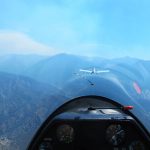
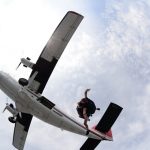
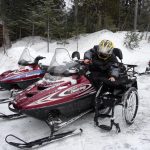
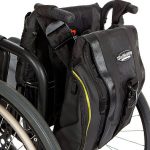
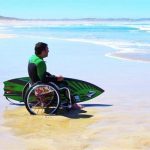
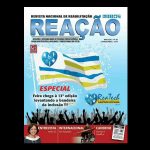
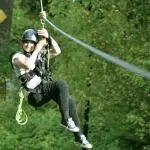
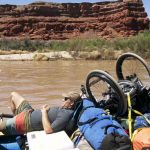
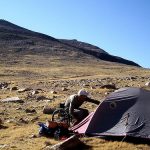
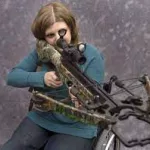
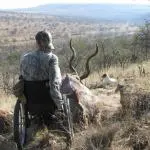
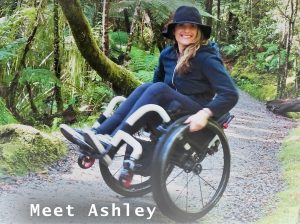

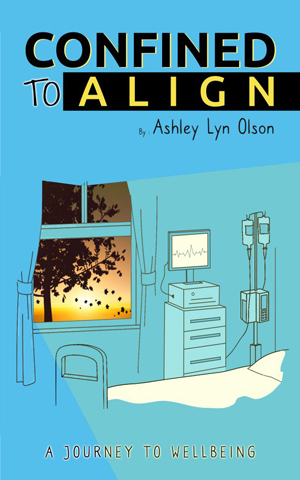
I think that cancelling flying lessons on any day when the weather is not perfect is just ridiculous! If airlines delayed or cancelled their flights on any day when the weather was not perfect, there would barely be any flights at all.